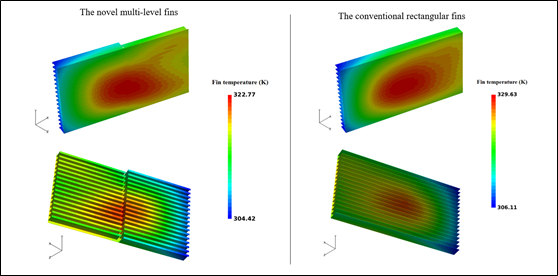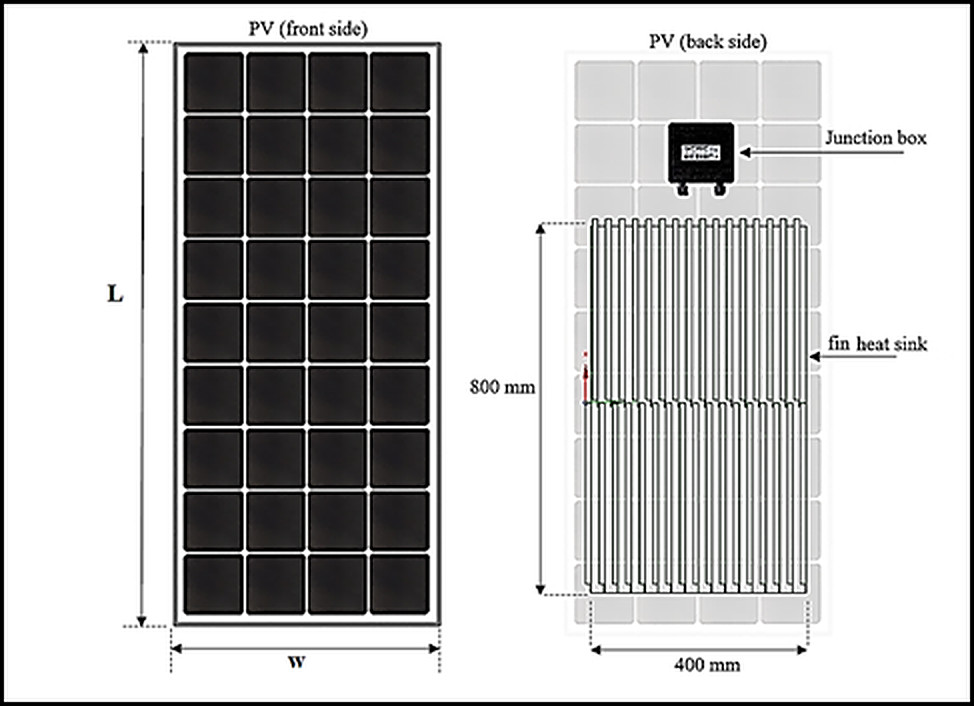Scientists from the Solar Energy Research Institute (SERI) at the Universiti Kebangsaan Malaysia have developed a passive cooling technique for photovoltaic modules based on the use of multi-level aluminum fin heat sinks (MLFHS) applied on the rear side of the panels.
“The novel fins were designed based on the temperature behavior of all types of crystalline modules,” the research's corresponding author, Adnan Ibrahim, told pv magazine. “So, they can be used for either monocrystalline and polycrystalline panels.”
The heat sinks were built with the commercially available aluminum alloy 6063 and were attached using epoxy resin with metal powder to the rear side of a 120 W monocrystalline panel. The use of epoxy is claimed to eliminate air gaps and improve thermal conductivity between the cooling system and the module and the proposed heat sink design is described by the researchers as able to reduce the stagnation zone within the heat sinks by inducing more air turbulence and better heat transfer.
The system has a dual fins height of 40 to 60 mm and the fins were L-shaped to offer a better heat dissipation rate per unit mass compared with the conventional heat sink.”The novelty of the proposed fins aims to improve the temperature non-uniformity by flattening the PV temperature curves,” they also explained.

Image: Solar Energy Research Institute (SERI), Universiti Kebangsaan Malaysia
This system configuration was tested on south-oriented 120 W monocrystalline PV modules installed with a tilt angle of 18 degrees and its performance was compared with that of a reference identical panel without the cooling system. “Since Malaysia is located near the equator, the climate is categorized as equatorial, hot, humid, and cloudy throughout the year,” the researchers specified. “The recorded temperatures were high and stable between 29 °C to 38 °C throughout the day, even when the solar irradiance dropped below 600 W/m2.”
Popular content
Their measurements showed that the reference module without the cooling system reached an average temperature of 64.2 degrees while that with the cooling tech reached 56.1 degrees Celsius, which means the proposed system was found able to reduce the module operating temperature by up to 8.45 degrees Celsius. The scientists warned, however, that this result may be achieved in hot weather countries that receive more than 600 W/m2 of solar irradiance, while the technology may not be economically viable for countries with average solar irradiance below 500 W/m2. “We estimated the cost of the MLFHS at $0.60/W,” Ibrahim told pv magazine.
All the details of the technique can be found in the paper “Outdoor performance evaluation of a novel photovoltaic heat sinks to enhance power conversion efficiency and temperature uniformity,” which was recently published in Case Studies in Thermal Engineering.
“The maximum electrical power output increases up to 10.75% by integrating the proposed MLFHS at the backside of the PV module,” the paper reads. “The proposed new fin heat sink design is a viable solution and economical to achieve temperature uniformity as the hotspot phenomenon can lead to mechanical damage and reduce its lifespan.”
This content is protected by copyright and may not be reused. If you want to cooperate with us and would like to reuse some of our content, please contact: editors@pv-magazine.com.



Sure very interested in concept!!!!!